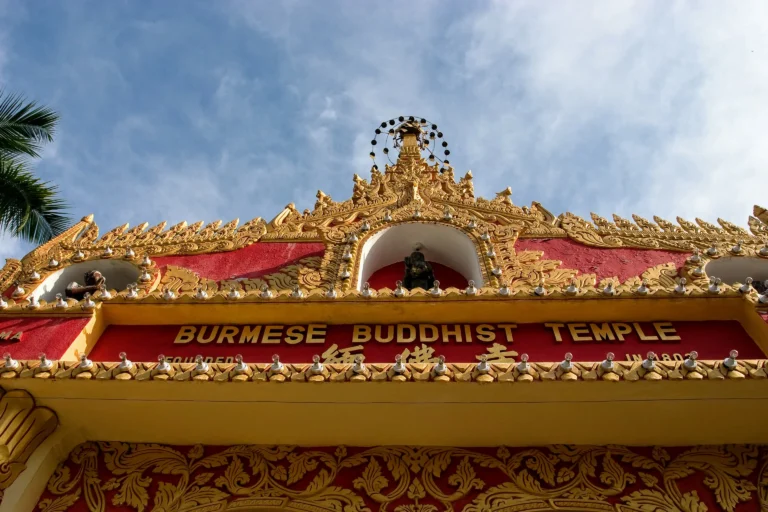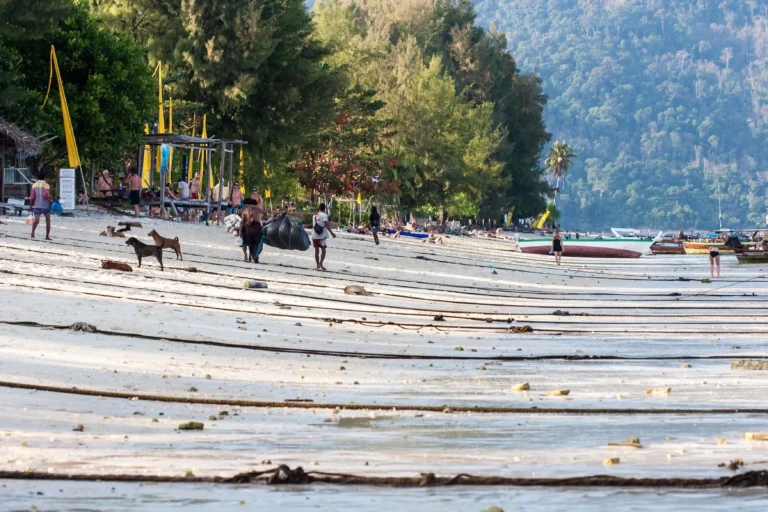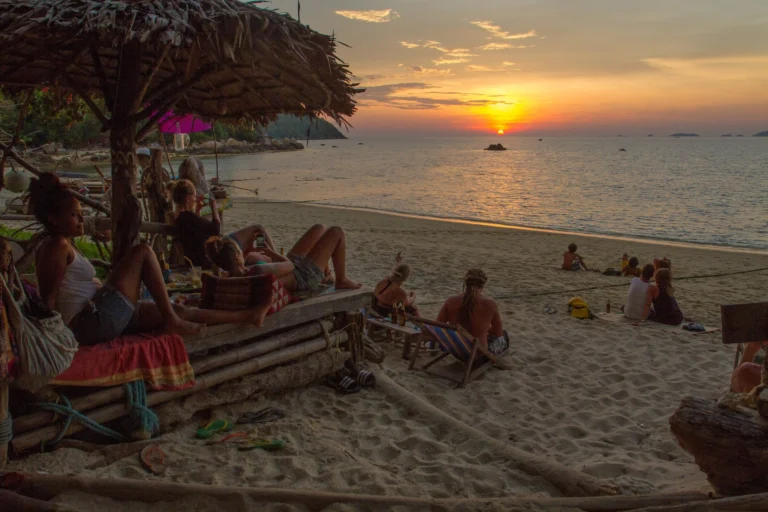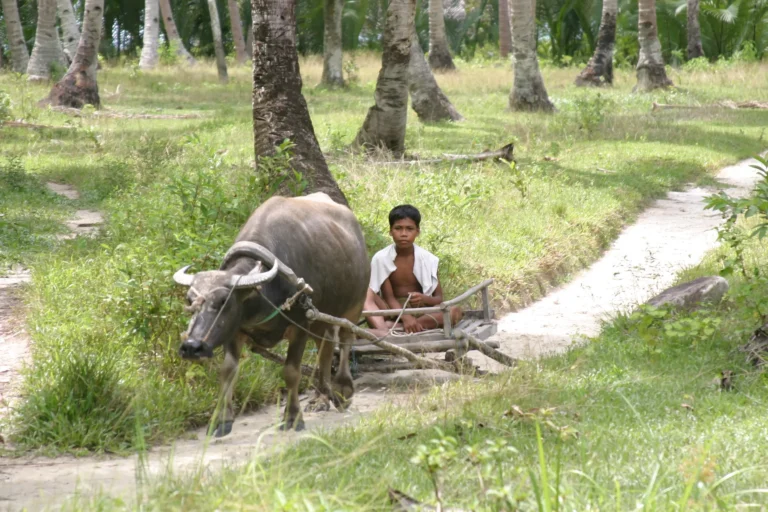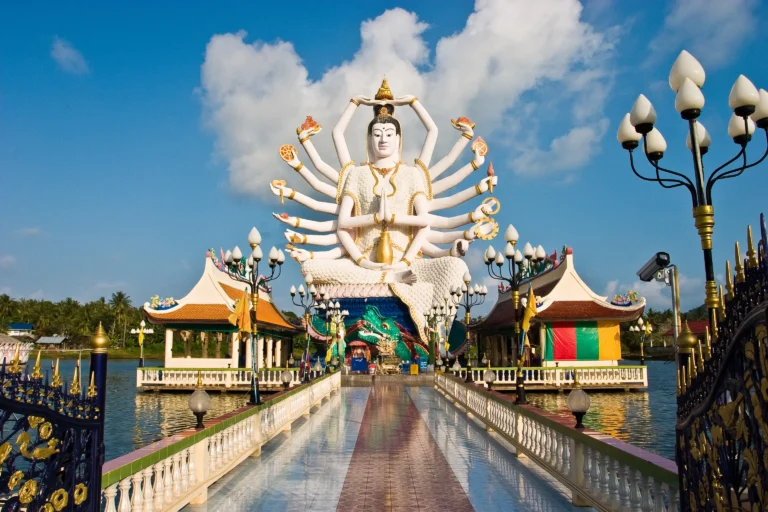We flew from Singapore to Penang on Singapore Airlines’ Boeing 777. The flight time was 1 hour and 20 minutes. Penang, or in Malay, Pulau Pinang, is a Malaysian state located on the northwest coast of Peninsular Malaysia. The name “Penang” comes from “pinang,” meaning the betel nut tree. “Pulau Pinang,” translated literally from Malay, means “pinang island.”
Penang is predominantly Chinese but has a strong presence of Indians and Malays. Preserving the Chinese cultural heritage in Penang is the most impressive region. We expected to feel an exciting blend of Malay, Chinese, and Indian cultures in Penang.
At the airport, a minivan met us and took us to the Paradise Sandy Beach hotel. A billboard was at the hotel door welcoming us (our names were there). We got our double rooms, and everything was perfect. Driving through the island had taken our fears away. Yes, we saw the sweeping and some broken hovels, but mainly everyday life just continued.
Our hotel was in a village called Tanjung Bungah. Tanjung Bungah is one of the suburbs of Georgetown, the capital of Penang. It was known as a fishing village, but now it’s populated by many commuters from Georgetown and people who work in the hotels along the beach.
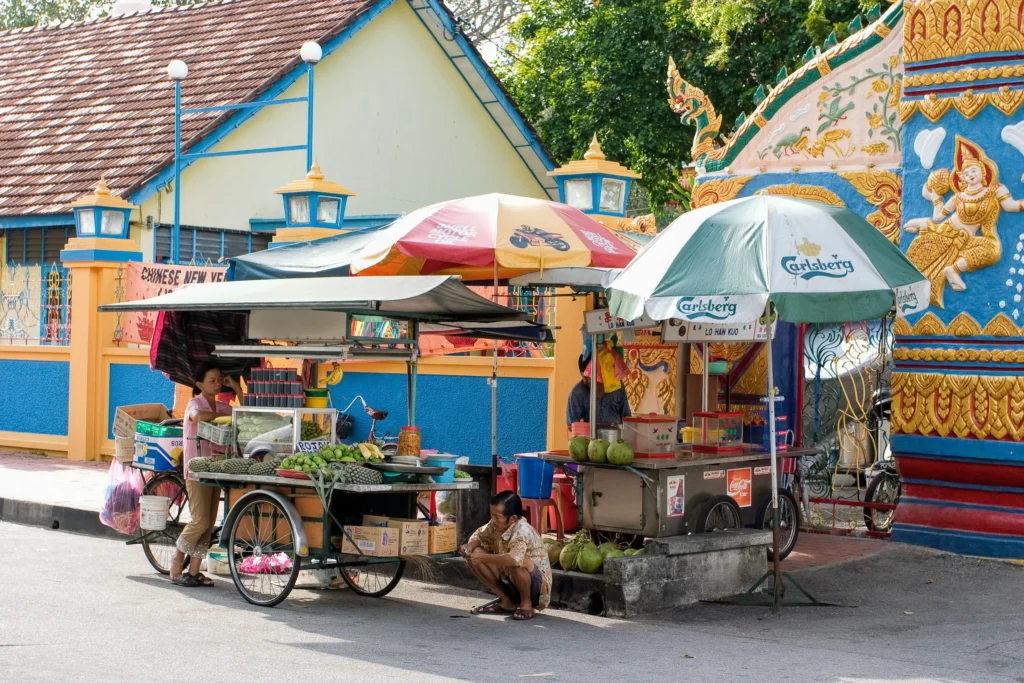
In the evening, we decided to go to dinner. From the hotel, we got the suggestion to go to Batu Ferringhi. A taxi ride from Tanjung Bungah costs 15 ringgit. We never paid by the meter in taxis; in most cases, there was even no meter in the cab. Batu Ferringhi looks like a new village, but it’s ancient. It used to be a kampong with a little fishing village.
Penang is very famous for its tasty food. Even Malay people from Kuala Lumpur love to go up to Penang for food from time to time. In different places in the world, you can find restaurants dedicated to Penang food called “Penang Garden” or similar, but there is no comparison with the real thing in Penang.
Our first experience with Penang food was just fabulous. The secret of Penang cuisine lies not in the elaborate preparation techniques but the use of fresh ingredients produced locally. You can try a vast array of Asian cuisines in a minimal area, with numerous Indian, Chinese, Malay, and Thai restaurants. Penang Laksa is a fish soup with a sour taste from tamarind paste; it is served with special white Laksa noodles.
After the first dinner, we were convinced that Penang food was legendary and fabulous.
The Beach, Temples, and new experience with Penang Food
The first half of the day we spent on the hotel’s beach. The sky was a bit cloudy but good enough for the first day. Then we went to the beach. It was closed in the morning. This was because of the tsunami-related dangers, but as we were there quite early, we got good places—eight sunbathing chairs in a row.
We also walked along a beach and saw the places shown on CNN related to tidal waves. The tsunami caught the unfortunate in Penang, mainly at Batu Ferringhi, Teluk Bahang, and Pulau Betong. The tsunami brought the island its most significant loss of life, property damage, and livelihood disruption caused by a natural disaster in living memory: 52 people died, five were missing, and 206 were injured; 615 houses and 1,332 boats were damaged, according to the Penang government’s statistics.
By lunchtime, we got enough sun, and we all got burned. Therefore, we decided that tomorrow, we would skip the beach. At 3 PM, we went to the hotel reception to organize some tours.
We rented a minivan with a driver. First, the bus driver took us to the silver shop. This was not our wish, but it seemed that this was beneficial for him. We did not buy anything. We were interested in temples.

Next, we stopped at Wat Chayamangkalaram Temple, the Temple of the Reclining Buddha. This brightly painted temple houses a 33-meter-long reclining Buddha draped in a gold-leafed saffron robe. The claim that it is the third-longest in the world is dubious. At the back of the reclining Buddha, there was a cemetery. The whole wall was full of urns with people’s photos. This colorful temple is worth visiting.
Next, we visited the Dhammikarama Burmese temple, which stands opposite the Thai temple. This is Penang’s first Buddhist temple, built in 1805. The gates of the Burmese temple have two giant stone elephants. The Burmese temple was on more significant territory and perhaps left an even bigger impression.
That afternoon, we had even one more attraction-Penang Hill. Penang Hill is a hill resort comprising a group of peaks, the central hill system of Penang Island. The funicular takes tourists up to Western Hill, which has an elevation at the highest point of 833 m (2723 ft) above sea level. On the Hill, there was a beautiful Hindu temple and mosque, but for some reason, they were closed. In addition, there were some souvenir stands and food stands, but we were not interested in them. So, we took some pictures from the top and went down quite quickly.
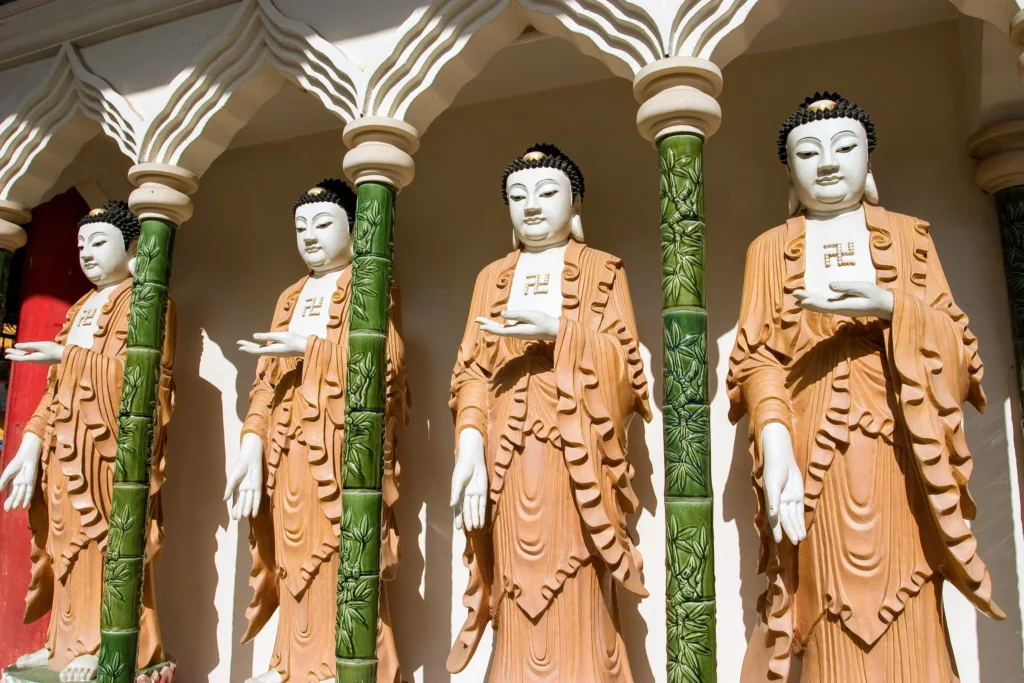
We asked the bus driver to take us to a good restaurant as the day was about to end when we came down from the Hill. We were sure that we would get an even better gastronomic experience with the local’s suggestions than yesterday. The first restaurant he wanted to suggest was closed. So, after thinking, he drove a long and wrong road. The minivan stopped at the door of the worst restaurant ever seen. They called themselves the “World Famous Fish Restaurant.” But this was horrible, all-the smell, the view, and the food. We were disappointed. We waited until the food was served but then left soon. We ordered a taxi and told the hosts that we would not pay for that food because we had not eaten it. The taxi took us to a good restaurant in Batu Ferringhi, and the driver told us that he guaranteed we would love the food. If we do not, he pays us money back. We loved the place and the food there. The place is called Jasmine’s Kitchen, and we can recommend going there.
Butterfly Farm, Fruit Farm, and Kek Lok Si Temple in Penang
Relaxing at the beach, Diamond Factory, Snake Temple, and fishing village in Penang
